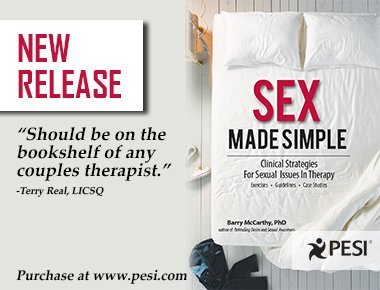TWO Prime Guidelines for Integrated Eroticism

Eroticism is the most controversial dimension of the desire/pleasure/eroticism/satisfaction mantra. Both in the media and among professionals, eroticism has a kinky/porn/lustful/socially unacceptable connotation. This has caused intimacy-based couple therapists to not just be wary of eroticism, but to take an anti-eroticism stance. It is true that eroticism can be misused by individuals‚ÄĒespecially men who compulsively use online porn which subverts couple sexuality. However, the great majority of men, women, and couples recognize that erotic scenarios and techniques are an integral component of individual and couple sexuality. Eroticism involves subjective and objective arousal in the 6-10 range. Pleasuring and eroticism are different dimensions, but not incompatible or adversarial. The pleasuring/eroticism process facilitates desire, orgasm, and satisfaction.
There are two prime guidelines for integrated eroticism. First, it is not at the expense of the partner or the relationship. Second, there is a clear understanding that erotic fantasy is a totally different dimension than real life couple sexuality. Erotic fantasies and erotic materials function as a super-charged ‚Äúsixth gear‚ÄĚ‚ÄĒthey provide a bridge to sexual desire or a bridge to orgasm. Confusing the role of erotic fantasy/materials and real life sexual behavior is the problem. Integrated eroticism promotes each partner having her unique erotic voice which reinforces couple sexuality. Integrated eroticism energizes couple sexuality. The core of integrated eroticism is to energize the couple bond, promote mystery and creativity, enjoy unpredictable and non-politically correct sexual scenarios, and provide vitality to the sexual relationship.
Integrated eroticism is a key factor in promoting orgasm and satisfaction. Eroticism has a unique role in resolving female orgasmic dysfunction, male ejaculatory inhibition, and premature ejaculation. Eroticism has a positive, integral role in individual and couple sexuality.
This post is an excerpt from the book Sex Made Simple, Clinical Strategies for Sexual Issues in Therapy by Barry McCarthy, PhD. McCarthy is a board-certified clinical psychologist, diplomat in sex therapy, certified marriage and family therapist, and a tenured professor of psychology at American University.
He has published 105 professional articles, 27 book chapters, and co-authored 15 trade books. Barry’s clinical expertise is in sexuality, especially issues of sexual desire, sexual function and dysfunction, relapse prevention, and prevention of sexual problems. He has presented over 350 workshops in the United States and internationally.
There are two prime guidelines for integrated eroticism. First, it is not at the expense of the partner or the relationship. Second, there is a clear understanding that erotic fantasy is a totally different dimension than real life couple sexuality. Erotic fantasies and erotic materials function as a super-charged ‚Äúsixth gear‚ÄĚ‚ÄĒthey provide a bridge to sexual desire or a bridge to orgasm. Confusing the role of erotic fantasy/materials and real life sexual behavior is the problem. Integrated eroticism promotes each partner having her unique erotic voice which reinforces couple sexuality. Integrated eroticism energizes couple sexuality. The core of integrated eroticism is to energize the couple bond, promote mystery and creativity, enjoy unpredictable and non-politically correct sexual scenarios, and provide vitality to the sexual relationship.
Integrated eroticism is a key factor in promoting orgasm and satisfaction. Eroticism has a unique role in resolving female orgasmic dysfunction, male ejaculatory inhibition, and premature ejaculation. Eroticism has a positive, integral role in individual and couple sexuality.
One of the most fascinating aspects of sexuality is the differences in what people find erotic. Have your clients try this exercise with their partner to create erotic scenarios and explore turn-ons.
This post is an excerpt from the book Sex Made Simple, Clinical Strategies for Sexual Issues in Therapy by Barry McCarthy, PhD. McCarthy is a board-certified clinical psychologist, diplomat in sex therapy, certified marriage and family therapist, and a tenured professor of psychology at American University.
He has published 105 professional articles, 27 book chapters, and co-authored 15 trade books. Barry’s clinical expertise is in sexuality, especially issues of sexual desire, sexual function and dysfunction, relapse prevention, and prevention of sexual problems. He has presented over 350 workshops in the United States and internationally.
Topic: Sexuality


